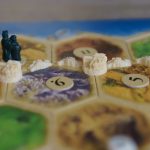Download links
How to install Exploring the Mysterious Chocolate Hills APK?
1. Tap the downloaded Exploring the Mysterious Chocolate Hills APK file.
2. Touch install.
3. Follow the steps on the screen.
Description
The Chocolate Hills, a geological wonder located in the Bohol province of the Philippines, are a striking landscape characterized by over 1,200 symmetrical mounds that rise dramatically from the surrounding terrain. These hills, which vary in height from 30 to 50 meters, are primarily composed of limestone, a sedimentary rock formed from the accumulation of marine organisms over millions of years. The unique conical shapes of the hills are the result of a combination of geological processes, including erosion and weathering.
The region was once submerged underwater, and as tectonic activity lifted the land, the limestone formations were exposed to the elements. The distinctive appearance of the Chocolate Hills is particularly pronounced during the dry season when the grass covering the hills turns brown, giving them a chocolate-like hue. This transformation is not merely aesthetic; it is a reflection of the underlying geology and climate of the region.
The hills are thought to have formed through a combination of karst processes, where acidic rainwater erodes the limestone, creating depressions and eventually leading to the formation of these iconic mounds. The interplay between geological forces and climatic conditions has resulted in a landscape that is not only visually stunning but also rich in geological history.
Key Takeaways
- The Chocolate Hills are a unique geological formation consisting of at least 1,260 individual hills in Bohol, Philippines.
- According to local legend, the Chocolate Hills were formed from the tears of a giant named Arogo, who cried over the death of his beloved.
- The Chocolate Hills are home to a diverse range of flora and fauna, including rare species of plants and animals.
- Tourists can explore the Chocolate Hills through activities such as hiking, zip-lining, and ATV tours, and visit attractions like the Chocolate Hills Complex and the Sagbayan Peak.
- Conservation efforts for the Chocolate Hills include reforestation projects, waste management initiatives, and sustainable tourism practices to preserve the natural beauty of the area.
The Legend and Folklore Surrounding the Chocolate Hills
The Legend of Arogo and His Beloved
One popular tale tells of two giants, Arogo and his beloved, who engaged in a fierce battle that ultimately led to the creation of the hills. According to this story, Arogo was heartbroken after his love passed away, and in his grief, he wept so much that his tears formed the hills.
A Giant’s Appetite and the Villagers’ Revenge
Another legend speaks of a giant who was known for his insatiable appetite for food. He would gather all the food from nearby villages, leaving them in despair. To teach him a lesson, the villagers decided to trick him by feeding him spoiled food. Enraged by their betrayal, the giant threw the spoiled food away, which then transformed into the hills we see today.
Cultural Significance and Local Identity
These stories serve as cultural touchstones for the people of Bohol, illustrating how natural phenomena can be woven into the fabric of local identity and heritage.
Flora and Fauna of the Chocolate Hills

The biodiversity surrounding the Chocolate Hills is as remarkable as their geological features. The area is home to a variety of plant species that thrive in its unique environment. Grasses dominate the landscape, particularly during the dry season when they turn brown and give the hills their characteristic color.
However, during the rainy season, these grasses flourish and create a lush green carpet that contrasts sharply with the dry months.
The fauna of the Chocolate Hills is equally diverse, with numerous species inhabiting this unique ecosystem. Birds such as the Philippine tarsier, one of the world’s smallest primates, can be spotted among the trees and shrubs that dot the landscape. This tiny creature is known for its large eyes and nocturnal habits, making it a fascinating subject for wildlife enthusiasts. Other animals include various reptiles and insects that play crucial roles in maintaining the ecological balance of the area. The presence of these species highlights the importance of preserving this unique habitat for future generations.
Exploring the Chocolate Hills: Tourist Activities and Attractions
| Activity/Attraction | Description | Location |
|---|---|---|
| Viewing Deck | Offers panoramic views of the Chocolate Hills | Carmen, Bohol |
| ATV Adventure | Explore the hills on an ATV | Carmen, Bohol |
| Butterfly Conservation Center | Learn about local butterfly species | Bilar, Bohol |
| Tarsier Sanctuary | Observe the endangered Philippine tarsier | Loboc, Bohol |
Tourism plays a significant role in promoting awareness and appreciation for the Chocolate Hills. Visitors flock to this natural wonder to experience its breathtaking views and engage in various activities that enhance their understanding of this unique landscape. One popular way to explore the hills is through hiking or trekking along designated trails that offer panoramic views from elevated vantage points.
The most famous viewpoint is located at Chocolate Hills Complex, where tourists can capture stunning photographs of the rolling hills stretching into the horizon. In addition to hiking, adventure seekers can partake in activities such as ATV rides that allow them to navigate through rugged terrain while enjoying an up-close experience with nature. For those interested in cultural immersion, local guides often offer tours that include storytelling sessions about the legends and folklore associated with the hills.
These experiences not only provide entertainment but also foster a deeper connection between visitors and the local culture. The combination of natural beauty and cultural richness makes exploring the Chocolate Hills an unforgettable experience.
Conservation Efforts for the Chocolate Hills
As tourism continues to grow in popularity around the Chocolate Hills, conservation efforts have become increasingly vital to protect this unique landscape from environmental degradation. Local government units and non-governmental organizations have initiated various programs aimed at preserving both the geological integrity and ecological health of the area. These initiatives often focus on sustainable tourism practices that minimize human impact on the environment while still allowing visitors to enjoy its beauty.
One significant conservation effort involves reforestation projects aimed at restoring native vegetation around the hills. By planting indigenous trees and plants, these projects help stabilize soil erosion and enhance biodiversity in the region. Additionally, educational campaigns are conducted to raise awareness among tourists about responsible behavior while visiting natural sites.
These efforts are crucial in ensuring that future generations can continue to appreciate and enjoy the Chocolate Hills without compromising their ecological integrity.
The Cultural Significance of the Chocolate Hills to the Local Community

The Chocolate Hills hold profound cultural significance for the local communities in Bohol. They are not merely a tourist attraction; they are an integral part of local identity and heritage. The hills are often featured in local art, music, and literature, symbolizing both beauty and resilience.
Festivals celebrating local culture frequently incorporate elements inspired by these geological formations, further embedding them into community traditions. Moreover, the hills serve as a source of pride for residents who view them as a testament to their natural heritage. They are often used as a backdrop for community gatherings and events, reinforcing their role as a communal space where people come together to celebrate their shared identity.
This cultural connection fosters a sense of stewardship among locals, motivating them to engage in conservation efforts and protect their natural environment for future generations.
The Formation and History of the Chocolate Hills
The formation of the Chocolate Hills is a fascinating tale that spans millions of years.
Over time, marine organisms contributed to limestone deposits on the ocean floor.
As tectonic forces lifted this limestone above sea level, erosion began to shape it into distinct mounds. The history of human interaction with this landscape is equally intriguing. Indigenous communities have inhabited Bohol for centuries, developing rich cultural traditions that are intertwined with their natural surroundings.
Historical accounts indicate that early settlers recognized the significance of these hills long before they became a tourist destination. Their stories and legends reflect an understanding of nature’s power and beauty that has been passed down through generations.
The Future of the Chocolate Hills: Environmental Concerns and Preservation Efforts
Looking ahead, several environmental concerns threaten the future of the Chocolate Hills and their surrounding ecosystem. Rapid urbanization and increased tourism can lead to habitat destruction and pollution if not managed properly. As more visitors flock to this natural wonder, there is a pressing need for sustainable practices that balance economic development with environmental preservation.
Efforts are underway to address these challenges through comprehensive planning and community involvement. Local authorities are working on implementing stricter regulations regarding land use and waste management in areas surrounding the hills. Additionally, engaging local communities in conservation initiatives ensures that those who live closest to these natural wonders have a stake in their protection.
By fostering a sense of ownership among residents and promoting sustainable tourism practices, there is hope for preserving this iconic landscape for generations to come. In conclusion, while challenges remain regarding environmental sustainability and conservation efforts around the Chocolate Hills, there is also a strong commitment from both local communities and authorities to protect this unique geological formation. Through education, responsible tourism practices, and community engagement, it is possible to ensure that future generations will continue to marvel at this natural wonder while respecting its ecological significance.
FAQs
What are the Chocolate Hills?
The Chocolate Hills are a geological formation located in the Bohol province of the Philippines. They are made up of around 1,200 to 1,776 conical limestone hills, which are covered in green grass that turns brown during the dry season, giving them a chocolate-like appearance.
How were the Chocolate Hills formed?
The exact formation process of the Chocolate Hills is still a subject of debate among geologists. One theory suggests that they are the weathered formations of a marine limestone on top of an impermeable layer of clay. Another theory proposes that they are the result of the uplift of coral deposits and the action of rainwater and erosion.
What is the significance of the Chocolate Hills?
The Chocolate Hills are a popular tourist attraction in the Philippines and are considered one of the country’s natural wonders. They have been declared the country’s third National Geological Monument and proposed for inclusion in the UNESCO World Heritage List.
Can visitors explore the Chocolate Hills?
Yes, visitors can explore the Chocolate Hills by climbing the viewing deck in the town of Carmen or by taking a guided tour. There are also hiking trails and ATV tours available for those who want to explore the hills up close.
Is there any wildlife in the area of the Chocolate Hills?
The Chocolate Hills are home to a diverse range of flora and fauna, including various species of plants, birds, and insects. The surrounding area also features the Bohol Habitat Conservation Center, which aims to protect and preserve the natural habitat of the region.





